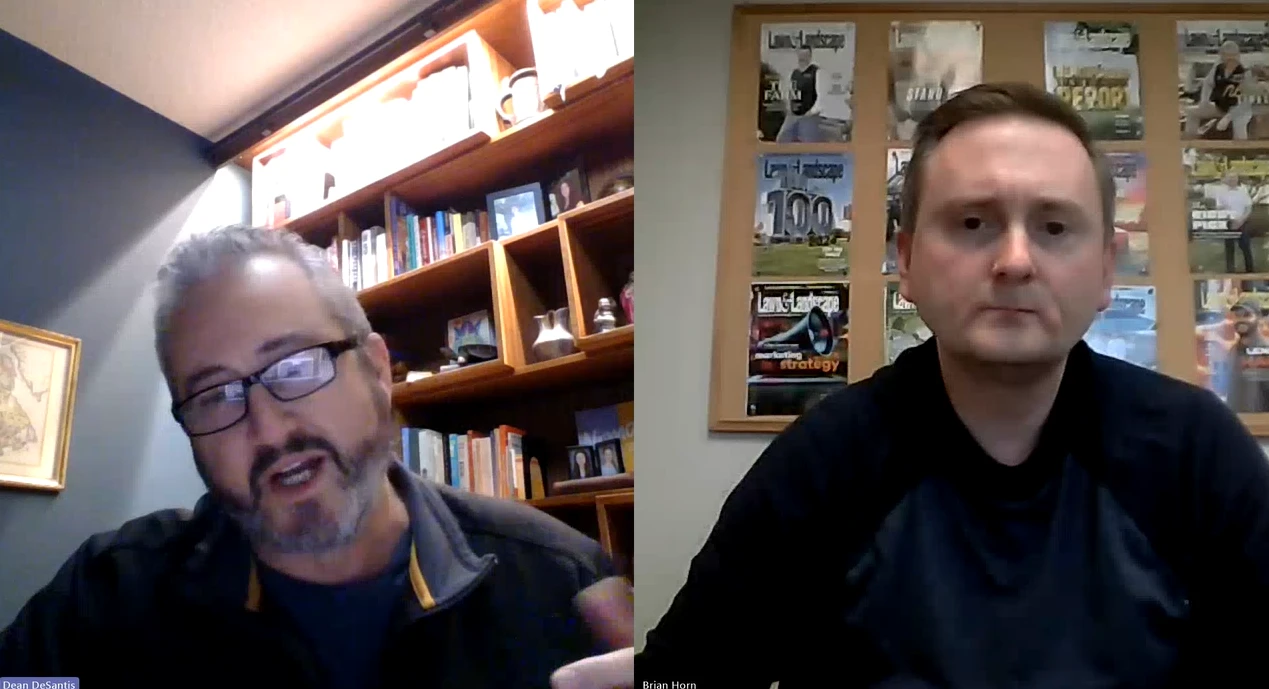Pesticide use in our homes, businesses and environment is often a very controversial, emotional issue. We’ve seen heated debates on television, read accounts of protests in magazines and newspapers and perhaps even taken part in serious discussions or confrontations ourselves. Few of us agree with the negative attack pesticides have received in recent years, but at the same time we care about the environment and do not wish to use harmful products.
For a while it seemed negative news about pesticides was showing up in the media on a daily basis. That appears to have subsided to some degree since the big Alar scare about a decade ago. However, concern has been renewed with the Food Quality Protection Act (FQPA) and the debates about how to implement this sweeping legislation and the impact it will have on landscape maintenance and other industries. As implementation moves forward, it remains a heated topic of discussion, especially since we realize some pesticide registrations for landscaping uses may be lost.
ON THE DEFENSE. Through the years, the landscape management industry has found it necessary to defend pesticide use around homes and businesses. We’ve had to justify pesticide use to state and federal regulatory agencies, environmental groups, the public in general and even our own customers.
For many years, landscape managers often took several different approaches to defuse the pesticide issue. One was to simply dismiss those who opposed pesticide use as "loons" or "environmental freaks" who needed to get a life. The reality is that many of the people concerned about pesticide use are not loons or freaks, but rather well-educated, intelligent people who for some reason have concerns about pesticides and the associated health and environmental risks. To simply dismiss them is inappropriate and incorrect.
More people than ever have concerns about pesticide use because fewer people than ever are involved in production agriculture. Decades ago, when a high percentage of the population was involved in agriculture, people were familiar with the tools of the trade, such as pesticides. Today, pesticide use is a foreign concept because less than 2 percent of the U.S. population lives and works on farms. People simply aren’t familiar with pesticides and why they are used.
By dismissing the loons and the freaks, we also acted as though these individuals didn’t have any solid ground to stand on. In fact, we know of instances, called attention to by the media, and other sources, where pesticides have caused both environmental and health problems. These instances have been primarily the result of pesticide misuse, and they have added to pesticides’ negative image.
PUTTING IT IN PERSPECTIVE. In the past when responding to pesticide criticism, many of us have simply countered attacks by citing life’s other, seemingly bigger risks. We felt that by overwhelming the concerned party with the other, larger threats to our respective lives, such as automobile accidents or heart disease, we would render any risk from pesticides negligible or trivial. Unfortunately, risk communication experts tell us this approach simply doesn’t. You can’t eliminate one fear by presenting a bigger one. In other words, the risk of getting cancer from pesticide exposure isn’t eliminated in a person’s mind as soon as they are told that artificial sweeteners or smoking cigarettes may be bigger risks. It simply gives them more problems to worry about.
While people may be convinced that the risk of dying from an automobile accident is hundreds of times greater than dying from pesticide exposure, people view driving an car as an essential part of life. But to many, pesticide use is unnecessary and that argument doesn’t carry much weight for some.
So, how do we present a positive image of the landscape industry and the manner in which it uses pesticides? The best way to promote our businesses and pest management strategies is not by being critical of the opposition, but by operating in a professional manner and openly discussing these issues with confidence.
TIMES HAVE CHANGED. Public concern about pesticide use has encouraged the development of new, lower toxicity products as well as new biological and organic pest controls. Without demand for new pest management approaches there would have been little funding available for research and limited incentive for companies to pursue the development of new technologies. This progress toward lower toxicity products, lower use rates and organic programs has been a positive development.
There is simply no comparison between the pesticides of today and the pesticides of 20 years ago. Today, the mammalian toxicities and use rates are much lower. Pesticides are also less persistent in the environment and more toxin-specific to insects, to name a few improvements. We have made a dramatic shift from the types of products we used to spray, which is good news for everyone.
The days of dieldrin and chlordane are long gone. We have more rigid testing than ever and new pesticides must undergo rigorous tests and screening. Companies registering new chemicals have their work cut out for them since it is becoming increasingly difficult and expensive to do so. The Environmental Protection Agency (EPA) is giving special consideration to reduced-risk products, since the concern over environmental and human health risks has encouraged some new and established companies to focus on alternative technologies and biorational controls for pest management in the landscape. While these have been positive developments, they have been challenging to all of us at times.
A good analogy to the current pest management situation is the U.S. automobile industry in the 1960s and 1970s. When pressure from foreign automakers intensified, it resulted in both short- and long-term changes with far-reaching implications.
Despite the challenges the U.S. auto industry faced during those years, the end result has been more cost-efficient, higher quality cars that are competitive in a global marketplace. Similarly, the challenges in the pest management industry have produced positive changes in our technologies. We can expect these trends to continue.
In addition, technology in the area of pest control for turf and ornamentals has increased dramatically. We once used products at rates in the range of 10 pounds or more of active ingredient per acre. Today, we have products that are less toxic to humans and animals and are used at rates of 0.1 pound of active ingredient per acre or lower. That is a 100-fold decrease in the amount of active ingredient applied. This is amazing, particularly in light of the fact that these products are also less toxic to people and pets on a pound-for-pound comparison.
A good example of pesticide progress is with products for soil insects, like white grubs and mole crickets, which have been among the most difficult to control and often require the highest pesticide rates. Some of the newest products use effective rates of just 0.0125 pounds of active ingredient per acre. Other products, such as halofenozide and imidacloprid have lower toxicities than many of the past products used for white grub control and lower use rates, as well. But, they also require more accuracy in timing for optimal control. These products are most effective when directed toward the first instar grub and less effective as remedial products to control the larger third instar grubs. These products are lower toxicity to humans, generally offer lower use rates than many older chemistries, and are unique classes or modes of action. Plan to see more of this in the future as the EPA approves new, lower toxicity chemistries.
FQPA'S IMPACT. With legislation, there are major developments the public needs to understand. FQPA is making sweeping changes in pesticide regulation. Rather than considering individual pesticides and uses, this law is looking at aggregate uses for all products with similar modes of action. While EPA is trying to base decisions on sound science, in some cases good data is lacking. This law has already had an impact on several products used in the turf and ornamentals area as companies have determined the registration of certain products will no longer be practical.
The most important component of this law is the aggregate analysis of pesticide exposure. In other words, all organophosphates, such as chlorpyrifos, are evaluated based on the exposure one might receive from these products for cockroach control in the home, termite control around the home, insect control in the lawn, other turf area exposures (athletic fields, etc.) and all agriculture uses of the product. This is much more strict than previous laws, which looked at individual products and specific uses. This law is moving forward and rather than fear it, we should use it to our advantage. We must be vocal and let EPA know when the registrations of valuable products are threatened. We are now working under the most comprehensive, scientifically based regulations ever. That should make the public feel good about what pesticides we are using – let’s inform them.
BETTER ALTERNATIVES. Are pesticides necessary to maintain quality landscapes? In many cases the answer is "yes." In some situations, pesticides may not be necessary if cultural and alternative control practices can be diligently employed.
Pest control without pesticides is practical in many situations, but usually requires other inputs, such as labor, to compensate for the synthetic products. However, many landscapes can be managed without pesticides and this is, in part, due to recent research that has helped us understand the ecology of many pests and their natural enemies. In addition, we have seen a recent influx of biological, natural and organic control products. While the efficacy of some of these products has not been thoroughly validated, many products are gradually finding a place in the landscape industry with companies developing programs using these low environmental impact products.
We have also seen an increase in products that are "natural" in their composition. Some new products, such as Conserve SC from DowAgrosciences, Indianapolis, Ind., are based on a natural organism found in the soil. This same material can be produced synthetically and gives us a biorational type of product effective against various caterpillars and other pests. Companies are still working on biological materials like entomogenous nematodes that attack insects, biological controls of diseases and nematodes, fungal pathogens such as Beauveria bassiana that attack insect pests and a whole array of other products. Many of these are showing great potential and some are already in use. Natural, biological, organic or biorational products (or whatever you wish to call them) offer great potential for the future.
We now understand our pests a lot better and have a excellent means to monitor, detect, and forecast them. This allows us to use cultural and management practices that help reduce the likelihood of pest outbreaks. It also allows us to use pesticides more effectively, which in turn, allows us to use them a minimum number of times at the lowest rates. This saves time and money and helps minimize unnecessary pesticide use, which is a positive move.
We have a positive story to tell about progress made in pest management. We are operating with the latest technology that has been the result of years of research and are using lower rates of less toxic materials. We are also operating under the strictest pesticide laws ever. This is all quite a positive image for pesticide use. Let’s tell everyone about it.
The author is a turfgrass entomologist at North Carolina State University, Raleigh, N.C.

Explore the March 2000 Issue
Check out more from this issue and find your next story to read.
Latest from Lawn & Landscape
- Wilson360 adds Daniel Grange as new consultant
- Batman and business
- CH Products releases new tree stabilizer
- Savannah Bananas founder Jesse Cole to speak at Equip Exposition
- Catch up on last year's Benchmarking report
- Davey Tree promotes Kevin Marks as VP of Western operations
- Bobcat Company names 2025 Dealer Leadership Groups
- Green Lawn Fertilizing/Green Pest Solutions awards employee new truck for safe driving





